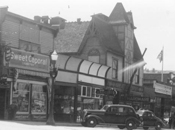
|
History of Kamloops Kamloops comes from the Secwepemc word “T’Kumlups”, referring to the flowing together of the North and South Thompson rivers. In the early days, 30 bands of Secwepemc (or Shuswap people) lived along the rivers and lakes of BC’s south-central interior, moving constantly, thus being known as a semi-nomadic nation. A bounty of elk, deer, salmon, wild plant roots and berries dominated the Thompson Valley, as well as excellent farmland and water sources for growing crops. This made for a suitable place to settle and eventually set up trading posts to trade furs and contraptions with the white man. The earliest human remains date back to over 8,250 years ago, yet it is not known exactly how long the people have occupied the valley. Before the Shuswap, vast ice sheets covered the valley. Ri From train robberies to stagecoach transport, to cattle ranching, Kamloops is home to the true wild west drama of the Kamloops region. Europeans arrived in Kamloops around 1811. From their technical advances came further trading, industry, the railroad, and ship transport. The Gold Rush brought wealth and a large influx of people searching for a better life. In 1893, Kamloops was incorporated with less than 1,000 people; yet today it is a population of nearly 85,000 and growing. Kamloops is still a central hub, as it sits approximately halfway between Calgary, Vancouver, and the northern Cariboo-Chilcotin regions.Baseball at Riverside Park circa 1939The people of Kamloops are what truly make the heart of Kamloops beat. We care about keeping the city beautiful and keeping our heritage alive: encouraging the western heritage of genuine leather, giving a wholesome friendly smile, and incorporating a cosmopolitan flair with exquisite, high-end urban amenities. |
